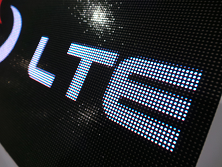Nokia Networks has held tests of three band carrier aggregation using 40MHz of spectrum, which it said will lead to more operators launching LTE-Advanced networks.
The trials were held in Ulm, Germany last month with Qualcomm and used the chipmaker’s Snapdragon 810 Category 6 processor and Nokia’s Flexi Multiradio 10 base station. It said speeds of 300MBps were reached by bringing together a 20MHz chunk of spectrum and two 10MHz bands.
The trials involved the 3GPP bands 1, 3 and 5, which are used by operators including SK Telecom. Nokia said the trial showed how carrier aggregation could help operators with fragmented spectrum holdings bring high speeds to its customers.
Tero Peltola, Head of FDD-LTE Business Line at Nokia Networks, said: “By applying carrier aggregation to more than two bands, we enable operators to turn their investment in 4G frequency spectrum and networks into marketable higher data rates. With this interoperability test campaign, we have verified that our carrier aggregation implementation works perfectly with user devices based on Snapdragon processors.”
Nokia Networks announced its three band LTE-A capabilities in February this year. It follows Korea becoming the first market to offer dual-band carrier aggregation of 10MHz + 10MHz last year and then launching peak downlink speeds of 225MBps through 20MHz + 10MHz carrier aggregation from June 2014.
The vendor is planning to launch the solution commercially by the end of 2014. Qualcomm said the first devices featuring the Snapdragon 810 processor should go on sale during the first half of next year.
Serge Willenegger, Vice-President of Product Management for Qualcomm Technologies, said: “The completion of these 3x CA interoperability tests helps expand the scope of Category 6 LTE and thereby enhances LTE user experience worldwide. Continuing evolution in networks and user device chipsets together is the fundamental enabler for making mobile broadband faster for more subscribers around the world.”
Earlier this month, Swisscom said it plans to launch three-band carrier aggregation to customers by the end of 2015, following the launch of a VoLTE service next summer.
Read more:



